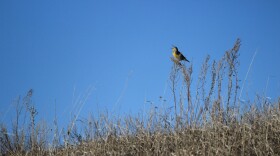It is that time of year. Labor Day is in the rearview mirror and thoughts are turning to fall. And fall in North Dakota often leads to thoughts of flocks of birds on their fall migration.
Migration is not an easy business. It has its risks, and it is extremely costly in terms of energy. For some birds, one-half of their body weight needs to be fat when they start their migration. Others must stop occasionally to stoke their biological furnaces in order to make the journey. Then of course, once they reach their wintering grounds, the environment may no longer meet their needs.
Most waterfowl hunters know that when it comes to waterfowl migration there are four generally recognized migration corridors or flyways: the Atlantic, Mississippi, Central (which includes North Dakota), and Pacific flyways. The concept of flyways is a rather broad generalization that helps waterfowl managers better manage geese, swans, and cranes that migrate in family groups. It is less useful with ducks and other birds. And as most goose hunters in North Dakota know, the fall flights of snow geese in the Central Flyway for example, can change markedly over the years.
But different species have quite different migration schedules. Actually, the fall migration for some birds started much earlier. You may have noticed that there are not many shorebirds around area marshes anymore. They likely started their migration back in July. Bohemian waxwings, on the other hand, will probably wait until lack of food pushes them southward.
We occasionally hear geese overhead during daylight hours as well as night. A lot of the smaller birds, warblers for example, migrate at night. And some species, such as snow geese, may fly non-stop to their destination. Others, however, will stop, perhaps daily, to rest and feed. Most will be flying under 3,000 feet, with some flocks consisting of a single species while others such as sparrow and blackbirds may migrate in mixed flocks.
It seems that during the spring and fall migrations we often wonder just how they do it. Not all of the birds will make it to their winter destination of course, but the majority of them will. So, make a point this fall of taking the time to enjoy these fall flights. Maybe even step outside at night occasionally to see if you can hear or see the birds migrating overhead. Even though scientists are solving some of the mysteries of migration, it still seems to fill us with a sense of awe and wonder.





